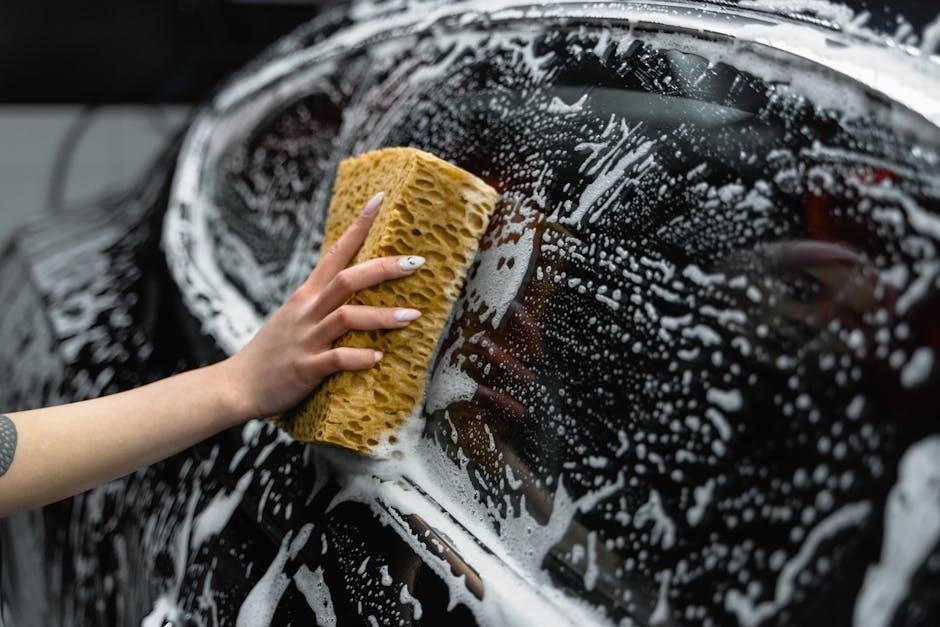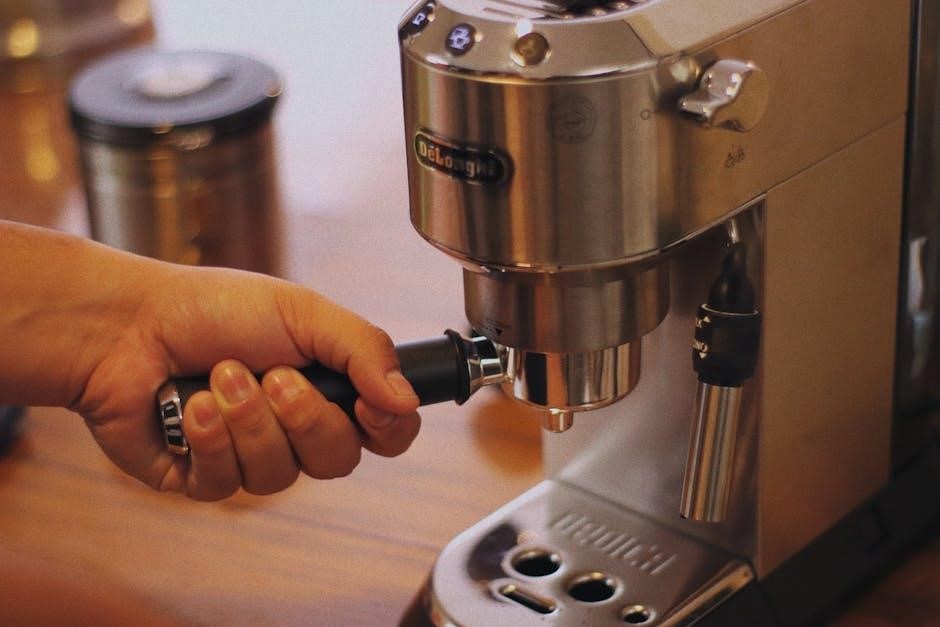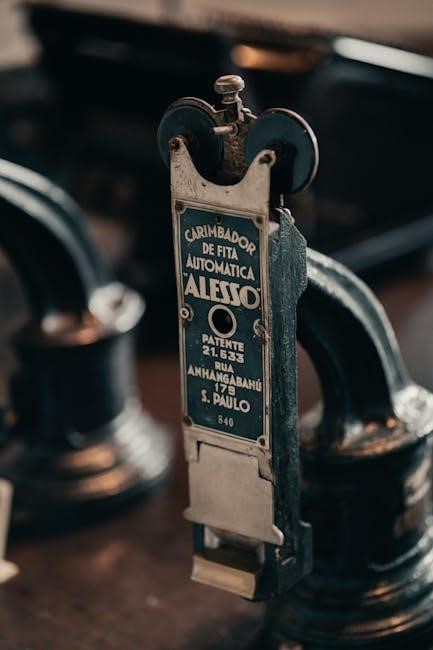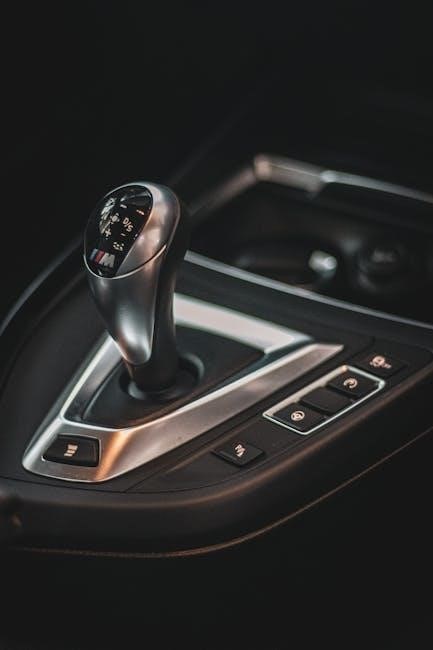Converting your BMW E46 from automatic to manual is a rewarding project for enthusiasts‚ offering enhanced driving dynamics․ This guide provides a comprehensive roadmap to achieve this transformation successfully․
Why Convert to Manual Transmission
Converting your E46 to manual enhances driving engagement and control‚ offering a more immersive experience․ A manual transmission improves performance‚ responsiveness‚ and fuel efficiency․ It also reduces long-term maintenance costs compared to automatics․ For enthusiasts‚ the tactile connection of shifting gears adds to the joy of driving․ Additionally‚ a manual swap can increase the car’s value among purists․ The rewards of better driver involvement and mechanical synergy make the effort worthwhile for those passionate about driving dynamics and classic BMW handling․
Overview of the E46 Model
The BMW E46‚ produced from 1998 to 2006‚ is a highly regarded compact executive car known for its precise handling and balanced design․ The E46 M3 CSL‚ a lightweight performance variant‚ stands out as a pinnacle of driving excellence․ Featuring a stripped-down design‚ stiffer suspension‚ and a quicker steering ratio‚ the CSL embodies BMW’s focus on performance purity․ Its limited production of 1‚383 units and enthusiast-approved upgrades make it a sought-after model․ The E46’s blend of agility and refinement has cemented its status as a classic among automotive enthusiasts and journalists alike․

Preparation
Preparation is crucial for a smooth E46 automatic to manual swap․ Gather necessary components‚ tools‚ and understand costs involved․ Ensure you have a comprehensive plan and timeline․
Choosing the Right Manual Transmission
When selecting a manual transmission for your E46 swap‚ consider compatibility‚ engine type‚ and performance needs․ The Getrag 420G and ZF S5-31 are popular choices‚ known for durability and smooth shifting․ Ensure the transmission matches your engine’s specifications‚ especially if you have a high-performance engine like the S54․ Gear ratios should align with your driving habits—closer ratios for spirited driving or track use‚ and taller ratios for highway comfort․ Research availability‚ cost‚ and required modifications to ensure a seamless installation․ Consulting forums and experts can provide valuable insights to make the best choice for your project․
Gathering Necessary Components
To ensure a smooth swap‚ gather all essential components in advance․ This includes the manual transmission‚ clutch kit‚ driveshaft‚ and manual pedal assembly․ Additionally‚ source a shifter‚ shifter bushings‚ and transmission mounts․ For the electrical side‚ secure the correct wiring harness and manual-specific sensors․ Don’t forget tools like a transmission jack‚ socket set‚ and torque wrench․ Brake fluid‚ gearbox oil‚ and clutch fluid are also required․ Verify compatibility of all parts with your E46 model and engine type to avoid installation issues․ Proper preparation ensures efficiency and reduces downtime during the swap․
Tools and Equipment Needed
A comprehensive set of tools is essential for the swap․ Start with a transmission jack‚ socket set‚ and torque wrench for handling heavy components․ A set of wrenches‚ screwdrivers‚ and punches will aid in disassembling parts․ Specialized tools like a BMW transmission alignment tool and ECU coding tools are necessary for precise adjustments․ Additionally‚ a hoist or lift can simplify the process‚ though it’s optional․ Gather protective gear like gloves and safety glasses․ Ensure all tools are compatible with your E46’s specifications to avoid complications during the swap․ Proper equipment ensures efficiency and safety throughout the project․
Understanding Costs and Time Commitment
The E46 automatic to manual swap requires a significant investment of both time and money․ Costs vary widely‚ depending on the source of the manual transmission and additional components․ Budget at least $2‚000 for parts‚ including the transmission‚ clutch kit‚ and pedals․ Labor costs can add $1‚000 or more if hiring a professional․ The project demands substantial time‚ often spanning several weeks to months‚ especially for novice mechanics․ Plan for approximately 40-60 hours of work‚ depending on complexity․ Unexpected expenses and delays are common‚ so proper planning and budgeting are crucial for a smooth conversion․

Mechanical Swap
The process involves replacing the automatic transmission with a manual one‚ including installing the clutch‚ driveshaft‚ and pedal assembly‚ requiring mechanical aptitude and precision․
Removing the Automatic Transmission
Begin by draining the transmission fluid and disconnecting the cooler lines‚ electrical connectors‚ and driveshaft․ Remove the crossmember and heat shield for access․ Detach the transmission mounts and carefully separate the transmission from the engine․ Use a transmission jack to support and remove the unit․ Ensure all connectors and lines are clear to avoid damage․ Properly dispose of the old transmission fluid and components․ This step requires patience and care to prevent damage to surrounding components and systems․
Installing the Manual Transmission
Begin by aligning the manual transmission with the engine’s mounting points‚ ensuring proper fitment․ Secure the transmission using compatible mounts and bolts․ Connect the driveshaft‚ verifying compatibility in length and spline count․ Install the clutch kit‚ including the clutch disc‚ pressure plate‚ and flywheel‚ ensuring precise alignment․ Attach the manual-specific sensors and connectors to the ECU‚ possibly requiring wiring adaptations․ Fill the transmission with the recommended fluid type․ Install the manual shifter assembly‚ adjusting for optimal feel․ Finally‚ bleed the clutch system to eliminate air bubbles and test the setup for smooth operation;
Fitting the Clutch Kit
Remove the old clutch assembly and inspect the flywheel for damage or wear․ Clean the flywheel surface thoroughly before installing the new clutch disc․ Use a clutch alignment tool to center the disc properly; Install the pressure plate‚ ensuring it is securely fastened with the provided bolts․ Tighten the bolts evenly in a star pattern to avoid warping the plate․ Finally‚ reinstall the flywheel and bolt it into place using the correct torque specifications․ Ensure all components are aligned and tightened properly for smooth engagement․
Replacing the Driveshaft
Remove the old driveshaft by disconnecting it from the transmission and differential․ Support the transmission to prevent damage during removal․ Compare the old automatic driveshaft with the new manual-specific unit to ensure compatibility․ Install the new driveshaft‚ aligning the splines carefully․ Reconnect it to both the transmission and differential‚ ensuring proper seating․ Tighten all bolts securely‚ following torque specifications․ Double-check the driveshaft alignment to avoid vibration or noise․ Finally‚ inspect the center support bearing and differential flange for any signs of wear or damage․
Installing the Manual Pedal Assembly
Bolt the manual pedal assembly into the driver’s footwell‚ ensuring proper alignment with the mounting points․ Connect the clutch master cylinder to the pedal assembly‚ securing it firmly․ Attach the clutch slave cylinder to the transmission and link it to the master cylinder․ Bleed the hydraulic system to remove air bubbles and ensure proper clutch engagement․ Adjust the pedal height and free play according to manufacturer specifications for optimal feel and performance․ Double-check all connections for leaks or misalignment before test-driving the vehicle․

Electrical Modifications
Reconfigure the ECU for manual transmission operation․ Update the wiring harness to support manual-specific components․ Install sensors for clutch position and gear selection․ Adjust the accelerator pedal sensor for compatibility․
Swapping the ECU
Replacing the ECU is crucial for manual transmission functionality․ Obtain an ECU pre-configured for manual operation․ Disconnect the battery before removal to prevent electrical issues․ Carefully extract the old ECU and install the new unit․ Reconnect the battery and use INPA or ISTA/D to code the ECU for manual transmission․ Ensure all parameters are updated for proper clutch and gear engagement․ Verify operation by checking for error lights and performing a test drive․ This step requires precise technical knowledge and may necessitate professional assistance․
Updating the Wiring Harness
Updating the wiring harness is essential for manual transmission functionality․ The automatic transmission relies on specific sensors and wiring that differ from manual configurations․ Key components like the clutch switch‚ reverse light‚ and neutral switch must be integrated․ Obtain a wiring harness designed for manual operation or modify the existing one․ Consult wiring diagrams to ensure proper connections․ Use tools like crimpers and heat shrink to secure connections․ This step ensures the ECU communicates correctly with manual-specific components‚ preventing electrical malfunctions and optimizing performance․
Installing Manual-Specific Sensors
Installing manual-specific sensors ensures proper communication between the transmission and ECU․ Key sensors include the clutch position sensor‚ reverse gear sensor‚ and neutral switch․ These components monitor clutch engagement‚ gear selection‚ and reverse operation․ Mount sensors securely and connect them to the wiring harness․ The clutch position sensor signals the ECU when the clutch is pressed‚ enabling smooth starts and shifts․ Reverse gear sensors activate rear lights during reverse‚ while the neutral switch ensures proper ignition and starter functionality․ Proper installation and alignment are critical for accurate sensor readings and system operation․
Adjusting the Accelerator Pedal
Adjusting the accelerator pedal is crucial for ensuring compatibility with the manual transmission setup․ Begin by installing the manual-specific accelerator pedal assembly‚ which typically includes a revised pedal ratio and sensor calibration․ Use a screwdriver to adjust the pedal’s position and ensure proper alignment with the throttle linkage․ Recalibrate the pedal position sensor to match the new manual transmission requirements‚ ensuring accurate throttle response․ Consult a service manual or online guide for precise calibration steps and torque specifications․ After adjustment‚ test the pedal’s responsiveness to confirm smooth acceleration and proper function․

Coding and Adaptation
Coding and adaptation are essential for integrating manual transmission components․ Update the ECU for manual transmission compatibility‚ recalibrate sensors‚ and adapt the DSC system for proper functionality․
ECU Coding for Manual Transmission
ECU coding is crucial for manual transmission integration․ Reprogram the engine control unit to recognize manual components‚ ensuring proper clutch and gear engagement․ Use tools like ISTA/D or INPA to update the software․ Recalibrate sensors like the clutch position sensor and gear lever switch for accurate readings․ Adjust the DSC system to adapt to manual shifting dynamics․ Proper coding prevents error codes and ensures smooth operation․ Always use a compatible ECU from a manual E46 model for a seamless swap․ Improper coding can lead to issues like erratic shifting or engine stalling․ Consult a professional if unsure․
Adapting the DSC System
Adapting the Dynamic Stability Control (DSC) system is essential for the manual swap․ The DSC must be recalibrated to work with the manual transmission’s shifting characteristics․ Use BMW-specific diagnostic tools like ISTA/D to update the DSC software․ Ensure the system recognizes the manual transmission’s input signals‚ such as clutch and gear position․ Failure to adapt the DSC can result in reduced traction control and stability․ Proper adaptation ensures optimal performance and safety․ Always test the DSC system post-swap to confirm functionality․
Updating the Gearbox Control Module
Updating the gearbox control module (GCN) is critical after a manual swap․ Use BMW-specific diagnostic tools like ISTA/D to flash the module with manual transmission software․ This ensures smooth communication between the transmission and ECU․ Without this update‚ the gearbox may malfunction or exhibit erratic behavior․ Synchronize the module with the ECU‚ DSC‚ and ABS systems using OEM software․ This step ensures proper gear recognition and optimal shift performance․ Always perform a test drive post-update to verify functionality and responsiveness․

Testing the Swap
After completing the swap‚ test the manual transmission with a gentle drive․ Monitor for smooth shifting‚ proper clutch engagement‚ and any unusual noises or vibrations․
Initial Start-Up and Checks
After completing the swap‚ start the engine and let it idle․ Check for any leaks around the transmission and clutch connections․ Ensure the clutch pedal operates smoothly and the gear shifts engage without resistance․ Use a scan tool to verify no error codes are present․ Test the bite point by pressing the clutch and shifting into gear․ Monitor the dashboard for any warning lights․ Ensure all electrical connections are secure and functioning properly․ This step ensures the manual transmission is integrated correctly before proceeding to a test drive․
Test Drive and Performance Evaluation
Take the car for a test drive on a quiet road to assess the manual transmission’s performance․ Check for smooth shifting and proper engagement of gears․ Accelerate gradually to ensure the clutch and gearbox function seamlessly․ Pay attention to any unusual noises or resistance․ Evaluate the overall driving experience‚ focusing on improved control and responsiveness․ Ensure the car accelerates smoothly and maintains consistent power delivery․ This step confirms the success of the swap and highlights any areas needing adjustment for optimal performance․
Troubleshooting Common Issues
Common issues during the swap may include incorrect ECU coding‚ misaligned driveshafts‚ or faulty clutch installations․ Check for proper wiring connections and ensure all sensors are correctly installed․ If the car hesitates or stalls‚ inspect the clutch pedal adjustment and throttle calibration․ Address any software faults by rechecking the DSC and gearbox control modules․ Verify fluid levels and look for leaks in the hydraulic system․ Persistent problems may require consulting a specialist or referencing community forums for solutions․ Thorough troubleshooting ensures a smooth and reliable driving experience․

Maintenance and Care
Regular fluid changes‚ clutch inspections‚ and drivetrain checks ensure optimal performance․ Monitor wear on components like the clutch and pressure plate‚ replacing them as needed․
Regular Maintenance for Manual Transmission
Regular maintenance is crucial for the longevity of your manual transmission․ Check the transmission oil level and top it off as needed to ensure smooth gear engagement․ Inspect the transmission mounts for wear and replace them if necessary to prevent vibration․ Lubricate the shifter and linkage periodically to maintain smooth shifting․ Regularly clean the transmission housing to prevent dirt buildup․ Listen for unusual noises‚ as they may indicate worn bearings or gears․ Always follow the manufacturer’s recommended maintenance schedule for optimal performance․
Clutch Wear Monitoring
Monitoring the clutch for wear is essential to ensure smooth operation and prevent premature failure․ Look for signs like slipping gears‚ difficulty engaging gears‚ or a spongy pedal feel․ Inspect the clutch disc and pressure plate for wear during regular maintenance․ Measure the clutch pedal free play and adjust as needed․ Replace the clutch kit if wear exceeds manufacturer specifications․ Avoid aggressive driving and riding the clutch to extend its lifespan․ Early detection of wear can prevent costly repairs and ensure optimal performance of your manual transmission swap․
Fluid and Filter Changes
Regular fluid and filter changes are crucial for maintaining the health of your manual transmission․ Use the correct transmission fluid type‚ as specified in your E46 manual‚ to ensure proper lubrication․ Replace the transmission filter every 30‚000 to 60‚000 miles to prevent contamination․ Check the fluid level periodically and top it off if necessary․ Clean or replace the filter as needed to maintain smooth gear shifts․ Keep track of your maintenance schedule to avoid premature wear on internal components․ Proper fluid care will extend the lifespan of your manual transmission and ensure optimal performance․

Common Issues and Troubleshooting
Common issues during an E46 automatic to manual swap include mechanical misalignment‚ electrical faults‚ and software incompatibilities․ Troubleshooting involves diagnosing and correcting these problems systematically․
Common Problems During the Swap
Common issues during an E46 automatic to manual swap include mechanical misalignment‚ such as improper flywheel and clutch alignment‚ and electrical faults like faulty ECU communication․ The clutch pedal assembly may not fit correctly‚ requiring modifications․ Driveshaft length discrepancies can cause vibration or damage‚ while incorrect wiring harness adaptations may prevent proper gearshift operation․ Software incompatibilities‚ such as the ECU not recognizing the manual gearbox‚ can result in failed starts or erratic behavior․ Addressing these issues early ensures a smoother transition to manual operation․
Diagnosing Electrical Issues
Diagnosing electrical issues during an E46 automatic to manual swap involves checking for faulty connections‚ incorrect wiring‚ or incompatible components․ Use an OBD-II scanner to identify error codes related to the ECU or sensors․ Common problems include miscommunication between the ECU and manual transmission‚ faulty clutch or gear position sensors‚ or improper wiring harness adaptation․ Test circuits with a multimeter and ensure all connections are secure․ Consult a wiring diagram to verify proper installation․ Electrical issues can prevent the car from starting or shifting correctly‚ so thorough troubleshooting is essential to resolve these problems effectively․
Resolving Mechanical Faults
Resolving mechanical faults during an E46 automatic to manual swap often involves addressing issues with transmission alignment‚ driveshaft fitment‚ or clutch installation․ Inspect the transmission for proper seating and ensure the driveshaft is correctly connected․ If the clutch pedal feels spongy or gear engagement is difficult‚ check the clutch kit installation and hydraulic system for leaks or air bubbles․ Use a service manual to verify proper torque specs and alignment․ If problems persist‚ consult a professional mechanic or experienced enthusiast to avoid further damage and ensure proper functionality of the manual setup․

Community and Resources
Engage with E46 enthusiast communities‚ forums‚ and Facebook groups for support․ Explore trusted parts suppliers like Turner Motorsport or BavAuto for genuine components and tools․
Online Forums and Communities
Joining online forums like Reddit’s r/BMW or E46-specific groups provides invaluable resources for the swap․ These communities share detailed guides‚ troubleshooting tips‚ and real-world experiences․ Members often post step-by-step instructions‚ photos‚ and videos to aid in the process․ Social media groups dedicated to E46 enthusiasts also offer a platform to ask questions and connect with others who have completed the swap․ Engaging with these communities can help you avoid common pitfalls and gain confidence in your project․ Their collective knowledge is a powerful tool for success․
Recommended Tools and Parts Suppliers
For a successful E46 manual swap‚ sourcing the right tools and parts is crucial․ Reputable suppliers like BMW OEM parts dealers‚ Turner Motorsport‚ and RockAuto offer genuine and compatible components․ Specialized tools such as a transmission jack‚ clutch alignment kit‚ and flywheel resurfacing tools are essential․ Online retailers like FCP Euro and Amazon provide a wide range of aftermarket parts․ Always verify compatibility and quality to ensure a smooth swap․ Checking forums for trusted sellers can also help you find reliable sources for rare or specific parts․
Expert Tips and Tricks
When tackling an E46 automatic to manual swap‚ experts recommend meticulous planning and organization․ Label all connectors and components before disconnection to ensure a smooth reassembly․ Use a torque wrench to avoid over-tightening bolts‚ and consider test-fitting parts like the clutch and flywheel․ Keep the workspace clean to prevent losing small hardware․ Stay organized with a parts checklist and take regular breaks to maintain focus․ Prioritize quality tools‚ as they often save time and reduce frustration․ Lastly‚ consult detailed repair manuals or forums for specific tips and tricks to handle unexpected challenges effectively․

Case Study
A case study detailing the successful conversion of an E46 from automatic to manual transmission‚ showcasing the process and the improved driving experience it offers․
A Successful E46 Manual Swap Example
A 2003 BMW E46 325i underwent a seamless automatic-to-manual transmission swap․ The owner sourced a Getrag 420G transmission and an OEM clutch kit․ The mechanical swap involved removing the automatic transmission‚ driveshaft‚ and pedal assembly‚ then installing the manual components․ Electrical modifications included ECU reprogramming and wiring harness updates․ The result was improved performance‚ driver engagement‚ and reduced maintenance costs․ This case highlights meticulous planning‚ proper tools‚ and professional guidance as key factors in a successful swap‚ inspiring enthusiasts to tackle similar projects with confidence․
Lessons Learned from the Project
The E46 automatic-to-manual swap highlighted the importance of meticulous planning and professional guidance․ Proper alignment of the transmission and driveshaft is critical to avoid vibration issues․ Budgeting extra for unforeseen parts‚ like a new pilot bearing‚ is wise․ Researching OEM specifications ensures compatibility․ Testing the clutch and gearbox before final installation prevents costly rework․ Time management is key‚ as the process often takes longer than anticipated․ Enthusiasts should prioritize quality tools and seek expert advice to avoid common pitfalls and ensure a smooth transition to manual driving․
The E46 automatic-to-manual swap is a rewarding project that enhances driving engagement and performance․ With careful planning and execution‚ enthusiasts can successfully transform their vehicle‚ experiencing the thrill of manual control and improved connectivity with the road․
Final Thoughts on the Swap
Converting an E46 from automatic to manual is a fulfilling endeavor that enhances performance and driver engagement․ The process‚ while challenging‚ offers a sense of accomplishment and connects you more deeply with the vehicle․ Improved control‚ responsiveness‚ and even fuel efficiency make the effort worthwhile․ For enthusiasts‚ the manual swap is a testament to their dedication and passion‚ transforming the driving experience into something truly rewarding and memorable;
Encouragement for Enthusiasts
Embarking on an E46 automatic to manual swap is a journey that rewards dedication and passion․ While challenges arise‚ the sense of accomplishment and enhanced driving experience make it worthwhile․ Embrace the process‚ and don’t hesitate to seek community support when needed․ Every obstacle overcome brings you closer to the thrill of a manual drive․ Stay persistent‚ and remember‚ the end result is a car that truly reflects your love for driving․ Dive in‚ and let your enthusiasm guide you to success!




Leave a Reply
You must be logged in to post a comment.